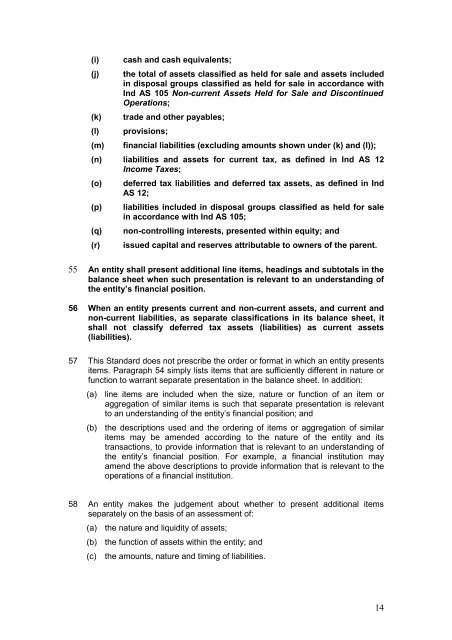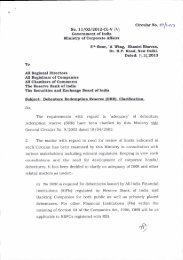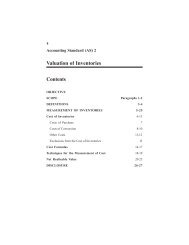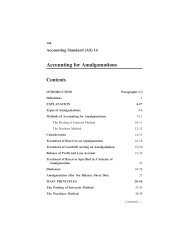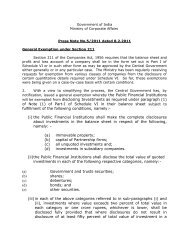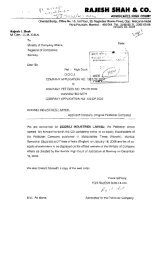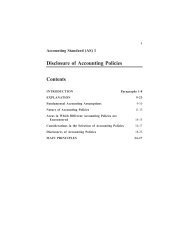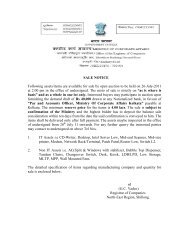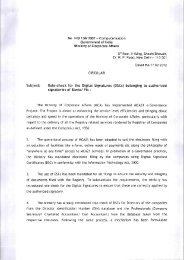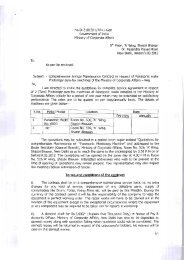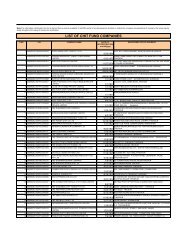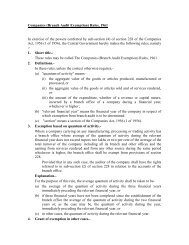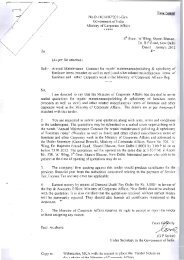Indian Accounting Standards(Ind AS) 1
Indian Accounting Standards(Ind AS) 1
Indian Accounting Standards(Ind AS) 1
Create successful ePaper yourself
Turn your PDF publications into a flip-book with our unique Google optimized e-Paper software.
(i) cash and cash equivalents;<br />
(j) the total of assets classified as held for sale and assets included<br />
in disposal groups classified as held for sale in accordance with<br />
<strong>Ind</strong> <strong>AS</strong> 105 Non-current Assets Held for Sale and Discontinued<br />
Operations;<br />
(k) trade and other payables;<br />
(l) provisions;<br />
(m) financial liabilities (excluding amounts shown under (k) and (l));<br />
(n) liabilities and assets for current tax, as defined in <strong>Ind</strong> <strong>AS</strong> 12<br />
Income Taxes;<br />
(o) deferred tax liabilities and deferred tax assets, as defined in <strong>Ind</strong><br />
<strong>AS</strong> 12;<br />
(p) liabilities included in disposal groups classified as held for sale<br />
in accordance with <strong>Ind</strong> <strong>AS</strong> 105;<br />
(q) non-controlling interests, presented within equity; and<br />
(r) issued capital and reserves attributable to owners of the parent.<br />
55 An entity shall present additional line items, headings and subtotals in the<br />
balance sheet when such presentation is relevant to an understanding of<br />
the entity’s financial position.<br />
56 When an entity presents current and non-current assets, and current and<br />
non-current liabilities, as separate classifications in its balance sheet, it<br />
shall not classify deferred tax assets (liabilities) as current assets<br />
(liabilities).<br />
57 This Standard does not prescribe the order or format in which an entity presents<br />
items. Paragraph 54 simply lists items that are sufficiently different in nature or<br />
function to warrant separate presentation in the balance sheet. In addition:<br />
(a) line items are included when the size, nature or function of an item or<br />
aggregation of similar items is such that separate presentation is relevant<br />
to an understanding of the entity’s financial position; and<br />
(b) the descriptions used and the ordering of items or aggregation of similar<br />
items may be amended according to the nature of the entity and its<br />
transactions, to provide information that is relevant to an understanding of<br />
the entity’s financial position. For example, a financial institution may<br />
amend the above descriptions to provide information that is relevant to the<br />
operations of a financial institution.<br />
58 An entity makes the judgement about whether to present additional items<br />
separately on the basis of an assessment of:<br />
(a) the nature and liquidity of assets;<br />
(b) the function of assets within the entity; and<br />
(c) the amounts, nature and timing of liabilities.<br />
14


